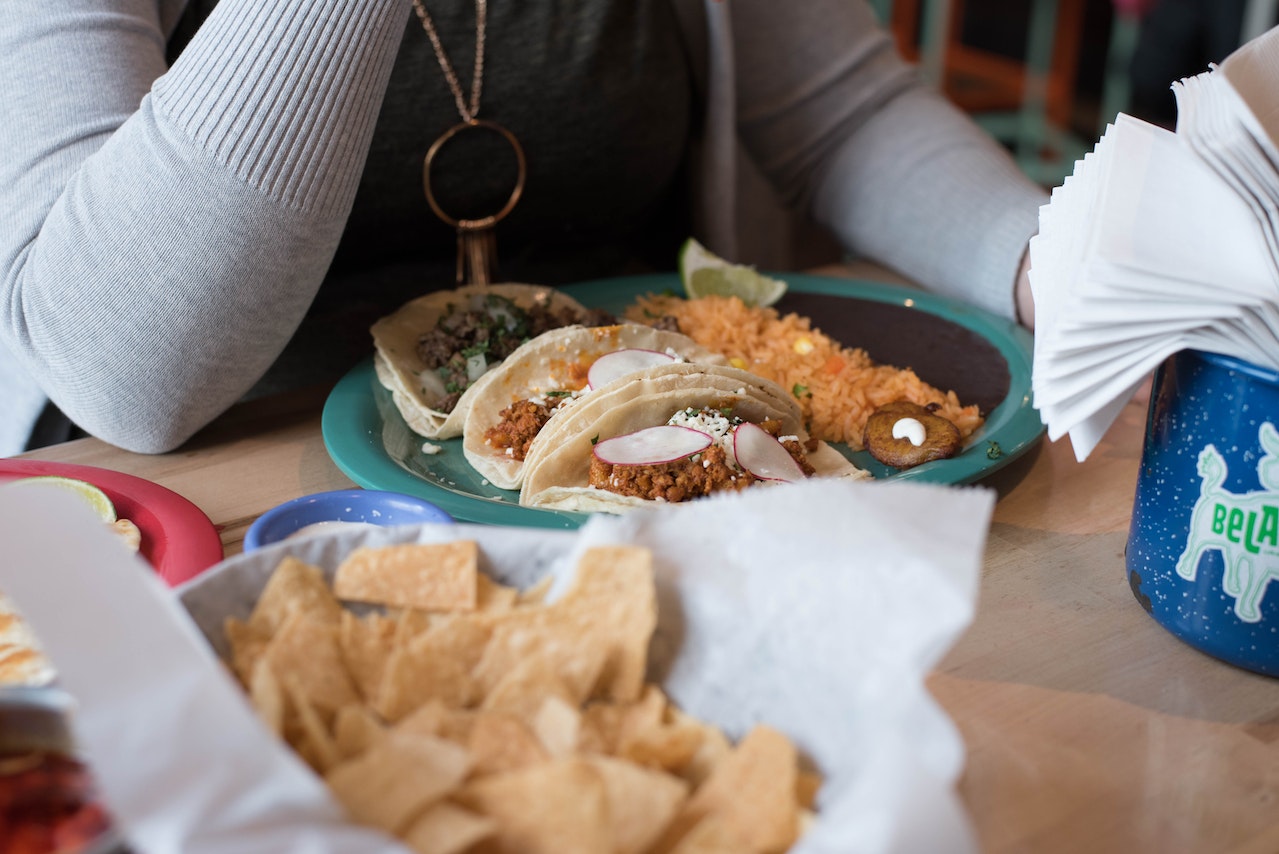Introduction: Eating Well Without Breaking the Bank
Good food doesn’t have to be expensive. Whether you’re a student, a busy professional, or a parent looking to feed your family on a tight budget, cooking delicious meals on a budget is absolutely possible.
Many believe that healthy, flavorful meals require high-end ingredients and costly groceries, but with the right strategies, you can create nutritious, tasty dishes without overspending.
In this guide, we’ll explore affordable cooking tips, budget-friendly meal planning, and smart grocery shopping habits that will help you enjoy great food while saving money.
1. Plan Your Meals in Advance
Why Meal Planning Saves Money
One of the best ways to cut food costs is by planning your meals ahead of time. Without a plan, impulse grocery shopping can lead to unnecessary expenses and food waste.
How to Create a Budget-Friendly Meal Plan:
- Choose recipes with simple, affordable ingredients.
- Plan meals around seasonal and sale items.
- Incorporate leftovers into your weekly meals to minimize waste.
Pro Tip:
Use a meal planning app or a simple notebook to write down your weekly menu and grocery list.
2. Buy Ingredients in Bulk
The Cost Benefits of Buying in Bulk
Purchasing pantry staples in bulk is one of the easiest ways to save money while ensuring you always have essential ingredients on hand.
Best Budget-Friendly Ingredients to Buy in Bulk:
- Rice, pasta, and lentils – Long shelf life and versatile for multiple meals.
- Dried beans and legumes – Cheaper than canned versions and great for protein-rich dishes.
- Frozen vegetables and fruits – Stay fresh longer and are often more affordable than fresh produce.
Pro Tip:
Shop at wholesale stores or local markets to get the best bulk deals.
3. Cook at Home Instead of Eating Out

Why Home-Cooked Meals Are Cheaper and Healthier
A single restaurant meal can cost two to three times more than a homemade version. Cooking at home allows you to control ingredients, portion sizes, and costs.
How to Make Home Cooking More Convenient:
- Prep ingredients in advance to save time during busy days.
- Use one-pot recipes and slow cookers for easy, low-maintenance meals.
- Batch cook and freeze portions for quick, budget-friendly meals later.
Pro Tip:
Try homemade versions of restaurant favorites to enjoy gourmet flavors without the hefty price tag.
4. Use Affordable Protein Sources
Eating Protein on a Budget
Protein is essential, but meat can be expensive. Fortunately, there are many affordable protein alternatives that provide the same nutritional benefits.
Best Budget-Friendly Protein Sources:
- Eggs – Cheap, versatile, and packed with nutrients.
- Beans and lentils – High in protein and perfect for soups, stews, and salads.
- Canned tuna or sardines – Affordable seafood options with long shelf life.
- Tofu and tempeh – Great for plant-based meals and budget-conscious shoppers.
Pro Tip:
Try meatless meals a few times a week to cut costs while still getting enough protein.
5. Get Creative with Leftovers
Turn Leftovers Into New Meals
Instead of throwing out leftovers, transform them into new dishes to save money and reduce waste.
Smart Ways to Repurpose Leftovers:
- Roast chicken → Chicken soup or sandwiches
- Cooked rice → Fried rice with veggies
- Leftover veggies → Omelets, stir-fries, or casseroles
Pro Tip:
Keep a “leftovers night” in your weekly meal plan to use up everything in your fridge.
6. Shop Smart at Grocery Stores
How to Save Money While Grocery Shopping
Being strategic while grocery shopping helps cut costs without sacrificing quality.
Money-Saving Grocery Shopping Tips:
- Make a list and stick to it to avoid impulse purchases.
- Buy store-brand products—they’re often cheaper but just as good as name brands.
- Shop seasonal produce—it’s fresher and more affordable than out-of-season items.
Pro Tip:
Never shop on an empty stomach—you’re more likely to buy unnecessary snacks and expensive foods.
7. Use Affordable Spices and Herbs for Flavor

Budget Cooking Doesn’t Have to Be Bland
Seasoning your meals with herbs and spices adds incredible flavor without extra costs.
Best Budget-Friendly Spices:
- Garlic powder and onion powder – Great for almost any dish.
- Cumin and paprika – Perfect for soups, stews, and roasted vegetables.
- Dried oregano and basil – Adds depth to pasta sauces and dressings.
Pro Tip:
Buy spices in bulk or from local markets to save money in the long run.
8. Try Meatless and Plant-Based Meals
Why Plant-Based Meals Save Money
Meat is often the most expensive part of a grocery bill. Incorporating plant-based meals a few times a week can reduce costs while still being nutritious.
Affordable Plant-Based Meal Ideas:
- Vegetable stir-fry with rice or noodles
- Chickpea curry with flatbread
- Pasta with homemade tomato sauce and lentils
Pro Tip:
Use seasonal vegetables to make plant-based meals even more budget-friendly.
9. Cook in Batches and Freeze Meals
Save Time and Money with Batch Cooking
Batch cooking allows you to prepare multiple meals at once, reducing both food costs and cooking time.
Best Meals for Batch Cooking:
- Soups and stews
- Casseroles and pasta bakes
- Cooked grains (rice, quinoa) that can be used for multiple dishes
Pro Tip:
Label and freeze portions so you always have a home-cooked meal ready to go.
Comparative analysis table on How to Cook Delicious Meals on a Budget:
| Strategy | Best For | Key Actions | Benefits | Challenges | Ideal For |
|---|---|---|---|---|---|
| Meal Planning | Those with limited time and money | Plan meals for the week, create shopping lists, and buy only what is needed to avoid food waste. | Saves time and money; reduces food waste; ensures balanced meals. | Can feel restrictive; requires consistency and organization. | Those who prefer structure and like to avoid last-minute decisions. |
| Buying in Bulk | Families or individuals with larger storage space | Purchase staple ingredients like rice, pasta, beans, and canned goods in bulk to save money per unit. | Lower cost per unit; long-term savings; reduces packaging waste. | Requires storage space; upfront cost of bulk purchases. | Those with sufficient storage space and willing to plan for future meals. |
| Cooking Simple and Affordable Recipes | Beginner cooks or those new to budget meals | Stick to simple recipes using inexpensive ingredients such as eggs, lentils, pasta, and seasonal vegetables. | Less time-consuming; cost-effective; minimal ingredient list. | Limited variety in meals; may get repetitive. | Those looking to simplify meals without compromising on taste. |
| Using Leftovers | Busy individuals or families | Repurpose leftovers into new meals (e.g., turning roasted vegetables into soup or stir-fry). | Reduces food waste; maximizes ingredients; saves money. | Requires creativity and planning; may not always work for all meals. | Those looking to stretch meals and reduce waste. |
| Utilizing Frozen and Canned Foods | People with busy schedules or limited access to fresh produce | Opt for frozen or canned fruits, vegetables, and meats, which are often more affordable and have a longer shelf life. | Cost-effective; longer shelf life; convenient for meal prep. | Lower nutritional value in some cases; can lack flavor and texture. | Those who have limited access to fresh produce or want to save time. |
| Cooking in Large Batches | Families or individuals with leftovers in mind | Cook larger portions of a meal and store leftovers for later use, saving time and effort throughout the week. | Saves time; reduces the cost of cooking multiple meals. | Needs proper storage and organization; leftovers may lose quality over time. | Those who like to cook once and eat multiple times. |
| Using Store Brands | Budget-conscious shoppers | Choose generic or store-brand products instead of name brands for essentials like pasta, rice, and canned goods. | Often identical in quality to name brands; cheaper prices. | Some products may not meet quality expectations. | Those who want to save without compromising quality too much. |
| Seasonal and Local Produce | Those who want to eat fresh and affordable | Buy fruits and vegetables that are in season and locally sourced for the best prices. | Better taste; cheaper and fresher ingredients; supports local economy. | May require flexibility based on what’s in season. | Those looking to incorporate fresh produce while saving money. |
| One-Pot Meals | Busy individuals or families | Make meals like stews, soups, or casseroles that require minimal preparation and cooking time, using fewer ingredients. | Less clean-up; uses fewer ingredients; cost-effective. | Limited variety in types of meals; requires careful meal planning. | Those looking for easy and low-maintenance meals. |
| Cutting Down on Meat | Those seeking to eat healthy or reduce food costs | Incorporate more plant-based meals like beans, lentils, and tofu instead of meat-heavy dishes. | Often more affordable; can be healthier; allows variety in meals. | Some may miss the taste or texture of meat; may require recipe adjustments. | Those interested in reducing meat consumption for health or financial reasons. |
This table highlights different strategies to cook delicious meals on a budget, comparing key actions, benefits, challenges, and the ideal audience for each approach.
Conclusion: Enjoy Delicious Meals Without Overspending
Cooking delicious meals on a budget is all about being strategic with your ingredients, planning meals in advance, and making the most of what you already have in your pantry. By taking a thoughtful approach to grocery shopping, meal prep, and utilizing versatile ingredients, you can create flavorful, nutritious, and satisfying dishes without breaking the bank. Here are a few key strategies to help you stay within your budget while still enjoying tasty meals.
Start by planning your meals for the week. Creating a shopping list based on your meal plan will help you avoid impulse purchases and ensure you’re buying only what you need. Try to focus on recipes that use similar ingredients, so you can buy in bulk and reduce waste. Incorporate seasonal vegetables and fruits, as they are often cheaper and fresher.











